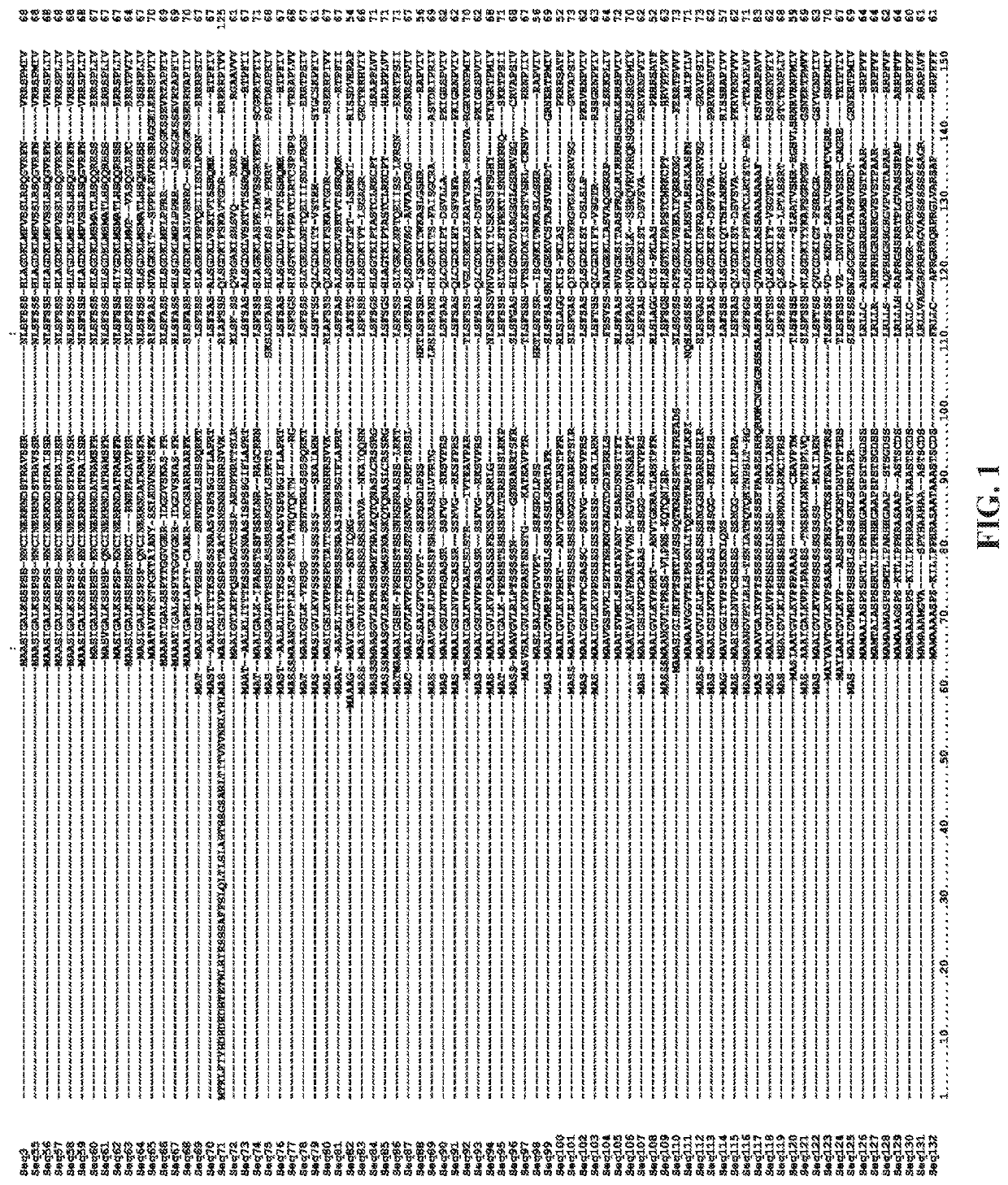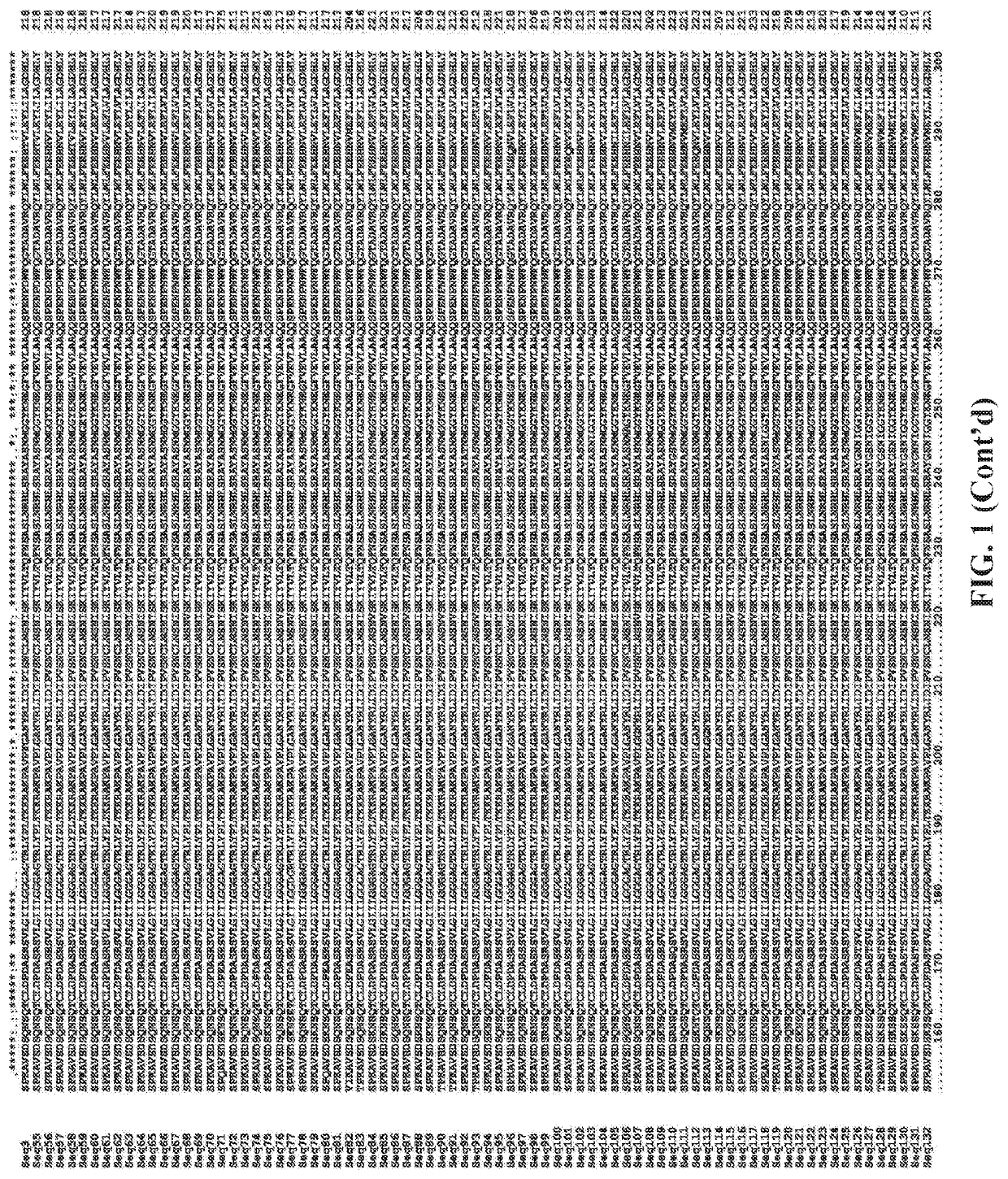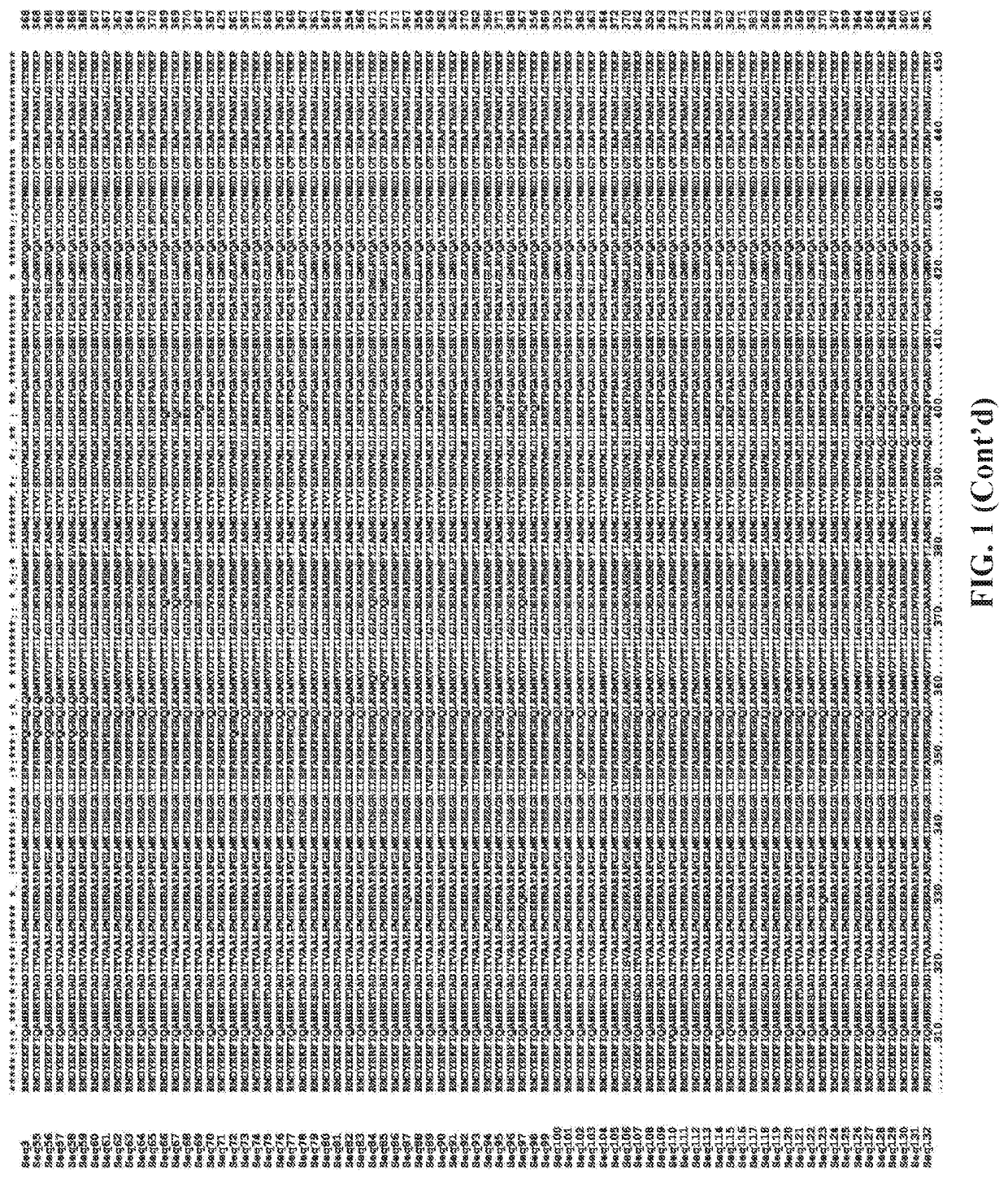Increasing plant growth and yield by using an ADP-glucose pyrophosphorylase sequence
a technology of adp-glucose pyrophosphorylase and adp-glucose, which is applied in the direction of enzymology, biochemistry apparatus and processes, transferases, etc., can solve the problems of plant growth and development impairment, and achieve the effects of increasing plant growth, increasing crop yield, and increasing the expression of at least one adp-glucose pyrophosphorylas
- Summary
- Abstract
- Description
- Claims
- Application Information
AI Technical Summary
Benefits of technology
Problems solved by technology
Method used
Image
Examples
example 1
ion of AGPaseSS Plant Transformation Vectors
[0131]An open reading frame encoding an AGPaseSS protein was synthesized. This open reading frame comprised SEQ ID NO:1 or SEQ ID NO:2, encoding the protein sequence of SEQ ID NO: 3. Appropriate restriction sites were included at the 5′ and 3′ ends of the coding sequence to allow this DNA to be cloned into plant transformation vectors that contained genetic elements suitable for controlling gene expression. In each plant transformation construct, the AGPaseSS open reading frame was located downstream of a plant promoter and 5′ untranslated region (5′UTR) and upstream of a 3′UTR Table 2. summarizes the plant transformation constructs that were built containing an AGPaseSS open reading frame. The AGPaseSS protein encoded by each of the ORFs in Table 2 is the protein sequence of SEQ ID NO:3.
[0132]
TABLE 2AGPaseSS plant transformation constructsConstruct IDPromoter + 5′UTRORF3′UTR130101ZmUbi (SEQ ID NO: 4)AGPaseSS (SEQ ID NO: 1)ZmUbi (SEQ ID NO...
example 6
ization of Transgenic Maize
[0143]T0-generation maize plants transformed with the AG-PaseSS plant transformation vector of interest and confirmed to contain the gene(s) of interest are grown to maturity in a greenhouse. When the T0 plants reach reproductive stages, they are pollinated by an appropriate inbred maize line to produce hybrid maize seeds. Alternatively, or in addition to pollination of the T0 transgenic maize plant, the pollen from the T0 is used to pollinate one or more inbred maize lines to produce hybrid maize seeds. The F1-generation hybrid seed resulting from these pollinations are planted in a field setting in two- or four-row plots and cultivated using standard agronomic practices. Plants are genotyped to determine which plants do and which do not contain the AGPaseSS gene cassette and any other relevant gene cassettes (e.g., a selectable marker gene cassette) that were included in the AGPaseSS plant transformation vector. Following the maturation of the maize plan...
example 7
ization of Transgenic Rice
[0145]T0-generation rice plants transformed with the AGPaseSS plant transformation vector of interest and confirmed to contain the gene(s) of interest are grown to maturity in a greenhouse, then self-pollinated. The resulting T1 seeds are planted in a greenhouse and the T1 plants are cultivated. T1 plants are genotyped to identify homozygous, heterozygous, and null segregant plants. The plants from each group are grown to maturity and allowed to self-pollinate to produce T2 seed. The T2 seed resulting from this self-pollination is harvested and weighed, and seed yields from homozygous, heterozygous, and null segregant plants are calculated. Appropriate statistical analyses are performed to determine whether plants containing an AGPaseSS gene cassette produced higher yields than those plants that lacked an AGPaseSS gene cassette.
[0146]T1-generation plants grown from seed that resulted from self-pollination of T0-generation plants, or T2-generation plants gro...
PUM
| Property | Measurement | Unit |
|---|---|---|
| nucleic acid sequence | aaaaa | aaaaa |
| size | aaaaa | aaaaa |
| stress tolerance | aaaaa | aaaaa |
Abstract
Description
Claims
Application Information
 Login to View More
Login to View More - R&D
- Intellectual Property
- Life Sciences
- Materials
- Tech Scout
- Unparalleled Data Quality
- Higher Quality Content
- 60% Fewer Hallucinations
Browse by: Latest US Patents, China's latest patents, Technical Efficacy Thesaurus, Application Domain, Technology Topic, Popular Technical Reports.
© 2025 PatSnap. All rights reserved.Legal|Privacy policy|Modern Slavery Act Transparency Statement|Sitemap|About US| Contact US: help@patsnap.com



